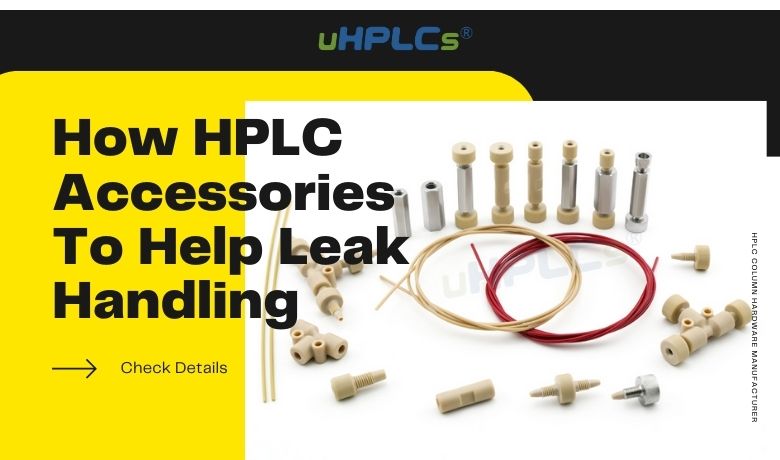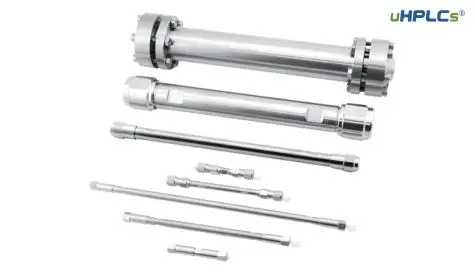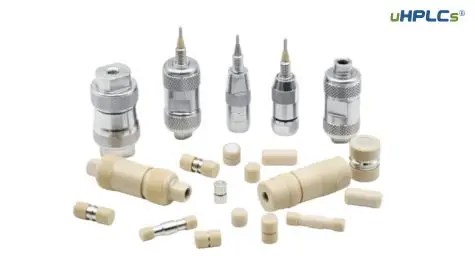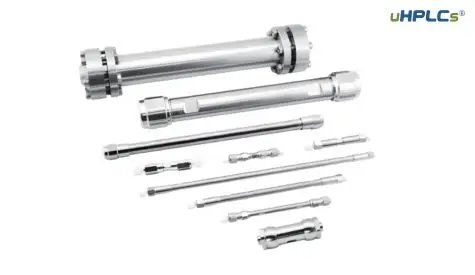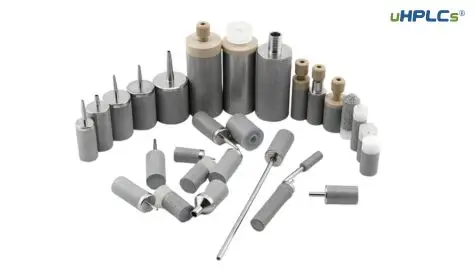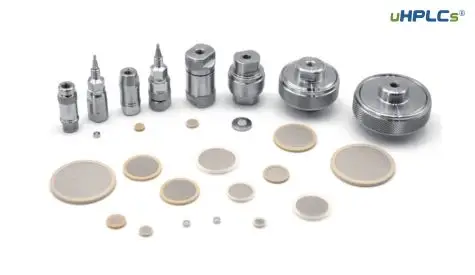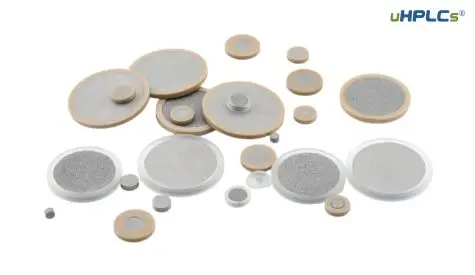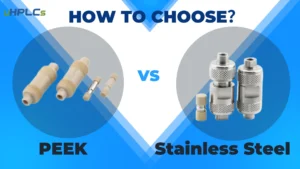As experience from our HPLC Expert, Normally, You can check as following HPLC Accessories:
High-Performance Liquid Chromatography (HPLC) is a technique in analytical chemistry used to separate, identify, and quantify each component in a mixture. Ensuring the system is leak-free is crucial for the system’s performance, accuracy, and safety. Therefore, proper maintenance of HPLC systems, including the use of appropriate accessories, can help manage potential leaks. Here are some accessories and practices to help with leak handling:
Leak Detectors: These are devices specifically designed to identify any leaks in an HPLC system. They can sense small changes in pressure or detect the presence of liquid in places it should not be. A leak detector can be an invaluable tool for preventing leaks before they cause significant damage or inaccuracy.
Fittings and Ferrules: Fittings are the parts of the HPLC system that connect different sections of tubing together. Ferrules, often made from stainless steel or a hard polymer, help to seal these connections and prevent leaks. It is crucial to use the right type and size of fittings and ferrules for each connection to ensure a leak-free seal.
Tubing: Properly installed and maintained tubing is essential for a leak-free HPLC system. It is important to regularly check the tubing for signs of wear or damage, as this could lead to leaks. High-quality tubing designed to withstand the pressures typically seen in HPLC systems can reduce the likelihood of leaks.
Maintenance Kits: Some manufacturers provide maintenance kits for their HPLC systems. These kits often include parts that are most likely to wear or degrade over time, such as seals and gaskets. Regular use of these kits can help to prevent leaks and keep the system running smoothly.
Seals and Gaskets: These are essential components of HPLC systems used to prevent leaks at various connection points and interfaces. They should be regularly inspected and replaced if signs of wear or damage are evident.
Pressure Regulators: A pressure regulator is used to control the pressure in the HPLC system. An improperly regulated system can cause leaks, so a well-functioning regulator can prevent leaks from occurring in the first place.
Proper Training: Finally, ensuring that all users of the HPLC system are properly trained can significantly reduce the likelihood of leaks. Users should understand how to properly make connections, how to detect potential issues, and when to replace parts.
Regular maintenance and vigilance are key to preventing leaks in an HPLC system. By investing in high-quality accessories and training, you can significantly extend the life of the system and prevent costly damage.
Some Typical HPLC Fittings You Should Check Carefully
Typical fittings consist of screws and ferrules designed to connect and seal the tubes. Despite their simple function, describing and using them is somewhat more complex. To describe a fitting exactly, several things need to be considered: the shape of the receiving hole (tapered or flat-low); what size of tube it fits; the thread of the screw, e.g., 10-32, 1/4-28, etc. (see thread definition and comparison of common threads in this chapter). Fittings can also be classified by unit of measure or by type of material.
The stainless steel fittings must be held together (or permanently attached) to the tube. We recommend the following processing steps.
First, fit the screws and ferrules to the tube in sequence, then attach them to the matching aperture and tighten the screws by hand while ensuring that the tube has reached the bottom of the aperture. Finally, use a spanner to turn another 3/4 of a buckle. Please note: the ferrule is now permanently fixed to the tube and can only be used in the bore if it is held tight. Incorrect use will result in dead volume and leaks (see next page). To tighten the pre-held stainless steel fittings correctly, we recommend using a spanner to tighten the 1/4 or 3/4 buckle again after hand tightening. In case of leakage, tighten the fitting a little more until the leakage stops. If the fitting still needs to be rotated for more than one week after hand tightening, we recommend replacing it, over tightening can cause damage to the product.
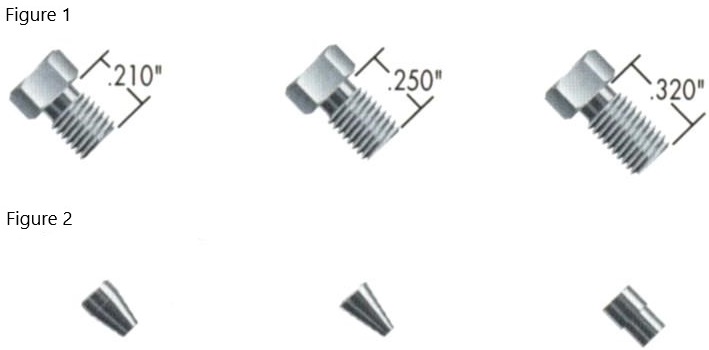
Polymer fittings
Unlike stainless steel, polymer fittings are almost universal in the equipment and are relatively simple to use, which is why they are becoming increasingly popular. Polymer fittings are not permanently attached to the tube and usually do not require tools (other than your fingers) to fasten them. In addition, these fittings are manufactured from a wide range of polymeric materials, offering a wide choice of prices and compatible solvents.
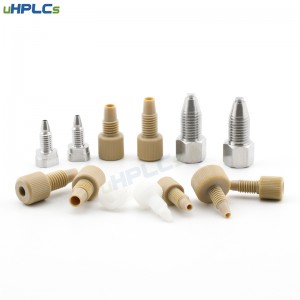
What happens if a fitting leaks?
1.) Check the HPLC tubes to make sure they are properly connected. When using a normal hand-turned fitting, the tube must be fully threaded through the fitting before it is tightened with screws and ferrules. If the tube moves when the fitting is tightened and pulled gently, the screw and ferrule will need to be reinstalled.
2.) The fitting may not have been tightened sufficiently. Stainless steel screws and ferrules must be tightened with a spanner even if used again. Hand-turned fittings also need to be tightened with force. However, a spanner should not be used unless required by the instructions. Otherwise, the fitting will be damaged.
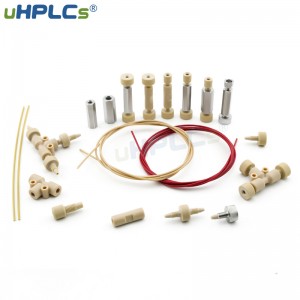
3.) You may have used incompatible fittings. Make sure that the screws and ferrules you are using are compatible with each other and with the fittings in your system. One way to avoid this problem is to use our universal hand screw fittings. As the ferrules will not always squeeze the tube, one-hand screw fitting can be reused in most systems. 4.
4.) Check the condition of the screws and ferrules. After repeated use, the screws (especially the ferrules) will gradually deform and eventually fail to function as designed for sealing. It is a good idea to have extra screws and ferrules so they can be replaced quickly to avoid unnecessary slackening of work.
5.) Sometimes leaks are not caused by screws and ferrules but by the receiving holes, especially those connected to stainless steel fittings. Please check the fittings and threads for visible scratches and replace them if necessary.
6.) If you use fittings made of materials incompatible with the flowing phase, this will certainly cause leaks and may result in permanent damage to the fittings. Please refer to the solvent compatibility table in this chapter.
Warning signs of a leaking system
Before you see the first drop of fluid leaking from a fitting, the system will show a number of signals to tell you that something is wrong:.
1) There is no fluid flow and no pressure.
2) Increased pump pressure, but no fluid flowing through.
3) Baseline noise
4) Baseline drift
Of course, these signals can also indicate problems that are not related to leaking fittings at all, but it is easiest to start with the fittings first. Not only are fittings easy to repair but they are the cheapest component of the system that can cause trouble.
Are you interested in optimizing your HPLC systems and ensuring they’re leak-free? Whether you need reliable accessories, maintenance kits, or expert advice, our team at uHPLCs is ready to assist you. We’re dedicated to providing the best solutions for all your HPLC needs.
Don’t hesitate to reach out to us today at sales@uhplcs.com and we’ll help you make the most out of your HPLC systems.
Contact us now – let’s ensure your operations are smooth, accurate, and safe. We’re looking forward to hearing from you!

